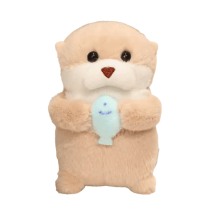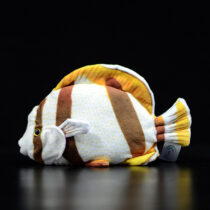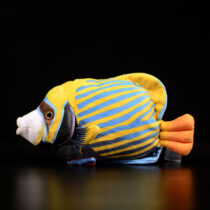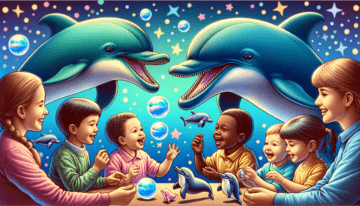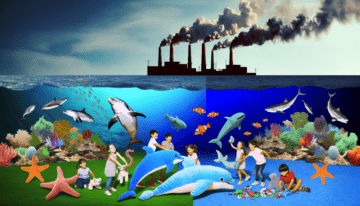
Introduction
Introduction:
Sea life plush toys have become increasingly popular in recent years, capturing the hearts and imaginations of children and adults alike. These cuddly toys, inspired by real-life marine creatures, may seem harmless and innocent, but there is a hidden controversy surrounding their production and impact on the environment. The use of synthetic materials, the mass production process, and potential harm to marine life have raised concerns among environmentalists and consumers. As the demand for these toys continues to grow, it is important to examine their impact and explore alternative solutions. In this article, we will delve deeper into the controversy surrounding sea life plush toys, discussing their potential harm to the environment and possible actions to address this issue. By raising awareness and taking responsibility, we can work towards a more sustainable future for these beloved toys and our planet as a whole.
- Introduction: Exploring the Controversy Surrounding Sea Life Plush Toys
- The Rising Popularity of Sea Life Plush Toys and Their Impact on the Environment
- Examining the Potential Harm Caused by Mass Production of Sea Life Plush Toys
- Alternative Solutions and Actions Being Taken to Address the Issue
- Conclusion: The Need for Greater Awareness and Responsibility in the Production and Consumption of Sea Life Plush Toys.
1. Introduction: Exploring the Controversy Surrounding Sea Life Plush Toys
In recent years, sea life plush toys have become increasingly popular among children and adults alike. These cuddly toys, inspired by real-life marine creatures, have captured the hearts and imaginations of many. However, beneath their adorable exterior lies a hidden controversy that has sparked debates and concerns among environmentalists and consumers. The question at hand is whether these sea life plush toys are harmful to the environment. While they may seem harmless and innocent, there are a few factors that have raised red flags and brought this issue to light. One of the main concerns is the materials used in the production of these toys. Most sea life plush toys are made from synthetic materials, such as polyester, which is derived from petroleum-based chemicals. These materials are not biodegradable and can take hundreds of years to decompose, contributing to the already pressing issue of plastic pollution in our oceans. Additionally, the manufacturing process of these toys often involves the use of harmful chemicals that can have a negative impact on the environment. Another aspect that adds to the controversy is the potential harm these toys can cause to marine life if they end up in our seas and oceans. The bright colors and soft textures of these toys can often be mistaken for food by marine animals, leading to ingestion and entanglement. These concerns have sparked a larger debate about the ethical and environmental responsibility of manufacturers and consumers when it comes to these popular toys. In this article, we will delve deeper into the controversy surrounding sea life plush toys, exploring the potential harm they may pose to the environment and discussing possible solutions to reduce their impact.

2. The Rising Popularity of Sea Life Plush Toys and Their Impact on the Environment
The rising popularity of sea life plush toys has become a hot topic of controversy, with concerns being raised about their potential harm to the environment. These cuddly and cute toys, inspired by various sea creatures such as dolphins, whales, and sea turtles, have become a must-have item for children and adults alike. This surge in demand can be attributed to their soft texture, adorable designs, and the increasing awareness of ocean conservation efforts. However, with their increasing popularity, comes the question of their impact on the environment. These plush toys are often made with synthetic materials, which not only contribute to the growing problem of plastic pollution but also harm marine life when they end up in our oceans and waterways. In addition, the production of these toys also requires a significant amount of energy and resources, further contributing to carbon emissions and environmental degradation. As consumers, we must be mindful of the potential consequences of our choices and strive to make more sustainable decisions. This could include opting for eco-friendly alternatives, such as plush toys made from organic materials or recycled materials, or supporting companies that have sustainable practices in their production processes. Ultimately, it is crucial to strike a balance between enjoying these adorable sea life plush toys and being responsible stewards of the environment. By being aware of the impact of our choices, we can make a positive difference in preserving our oceans and the creatures that call it home.
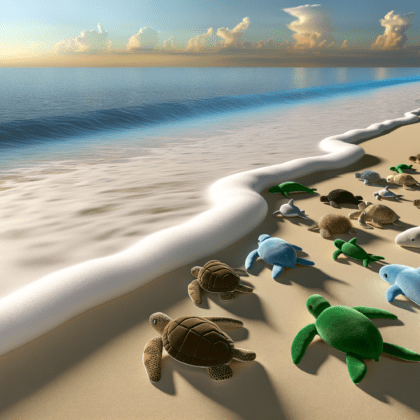
3. Examining the Potential Harm Caused by Mass Production of Sea Life Plush Toys
The mass production of sea life plush toys has become a popular trend among consumers, especially children. These soft and cuddly toys are often marketed as educational and environmentally-friendly, but there is a hidden controversy surrounding their production. It is important to examine the potential harm caused by the mass production of these toys, as they are not as innocent as they may seem. One of the main concerns is the environmental impact of producing these plush toys. The production process involves using large amounts of resources such as water, energy, and raw materials, which can contribute to environmental pollution and depletion of natural resources. Additionally, the materials used to make these toys, such as polyester and plastic, are not biodegradable and can take hundreds of years to decompose. This means that once these toys are discarded, they can end up in landfills or pollute the ocean, posing a threat to marine life. Moreover, the production of these toys often takes place in developing countries with lax environmental regulations, leading to further harm to the environment and exploitation of workers. As consumers, it is important to be aware of the potential harm caused by the mass production of sea life plush toys and to make informed choices when purchasing them. Companies should also take responsibility for their production processes and prioritize sustainability and ethical practices. By examining the hidden controversy surrounding these toys, we can work towards finding more environmentally-friendly and ethical alternatives that still bring joy to children without harming the planet.
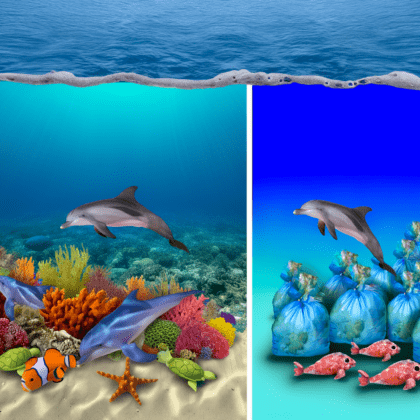
10cm Otters Soft Stuffed Plush Toy
11cm Doublesash Butterfly Fish Soft Stuffed Plush Toy
11cm Emperor Angelfish Soft Stuffed Plush Toy
4. Alternative Solutions and Actions Being Taken to Address the Issue
As the popularity of sea life plush toys continues to rise, so does the growing concern about their potential harm to the environment. These adorable stuffed animals are often made from synthetic materials and can end up in landfills or the ocean, contributing to pollution and endangering marine life. However, there are alternative solutions being explored and actions being taken to address this issue. One solution is the use of sustainable materials such as organic cotton or recycled plastic in the production of these toys. This not only reduces their environmental impact but also promotes eco-friendly practices. Another approach is to educate consumers about the importance of proper disposal and recycling of these toys, as well as the impact of their purchasing choices on the environment. Many companies are also taking steps towards sustainability by implementing recycling programs and using eco-friendly packaging for their products. Additionally, some organizations are calling for stricter regulations on the production and sale of sea life plush toys to ensure that they are not harmful to the environment. These efforts demonstrate a growing awareness and commitment to addressing the hidden controversy surrounding these toys. As consumers, we can also make a difference by choosing to support companies that prioritize sustainability and proper disposal of their products. By taking these actions, we can help mitigate the harmful effects of sea life plush toys on the environment and protect our delicate ecosystems for future generations.
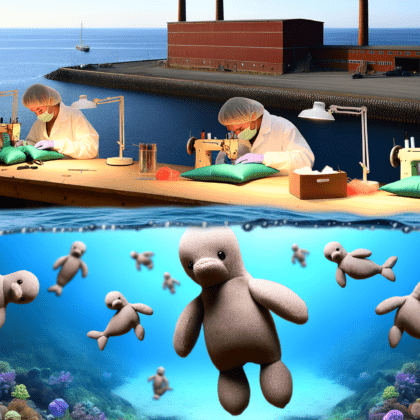
5. Conclusion: The Need for Greater Awareness and Responsibility in the Production and Consumption of Sea Life Plush Toys.
In conclusion, the controversy surrounding sea life plush toys highlights the need for greater awareness and responsibility in both the production and consumption of these products. While these adorable toys may seem harmless, the reality is that they can have a detrimental impact on the environment. By using unsustainable materials and contributing to pollution and waste, the production of sea life plush toys can harm our oceans and the creatures that call it home. As consumers, it is our responsibility to be more mindful of the products we purchase and their impact on the environment. This includes choosing sustainable and eco-friendly options, and properly disposing of these products when they are no longer needed. However, the responsibility also lies with companies to prioritize sustainability and ethical production practices in their manufacturing processes. By raising awareness and taking action, we can work towards a more sustainable and responsible future for these beloved sea creatures and the planet as a whole. As the demand for sea life plush toys continues to grow, it is crucial that we all play our part in preserving the beauty and health of our oceans. Let’s strive for greater awareness and responsibility in the production and consumption of sea life plush toys, so that future generations can continue to enjoy these adorable toys without causing harm to the environment.
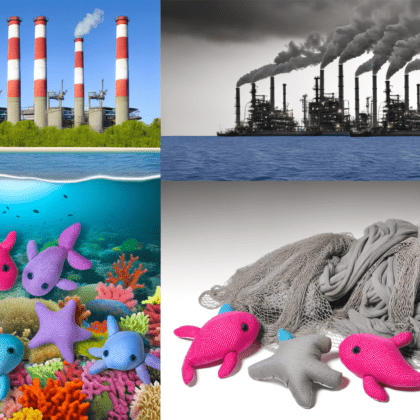
Conclusion
In summary, sea life plush toys have become a controversial topic due to their potential harm to the environment. The materials used in their production, the mass production process, and their impact on marine life are all contributing factors to this issue. However, there are alternative solutions being explored and actions being taken to address this problem. As consumers, it is crucial to be mindful of the products we purchase and their impact on the environment, while also supporting companies that prioritize sustainability. Ultimately, the responsibility lies with all of us to make more conscious choices and work towards a more sustainable future for these beloved sea creatures and our planet. As we continue to enjoy these adorable plush toys, let us remember the importance of being responsible stewards of the environment.
